Raface-2.5 Tablet 10's


MRP ₹50
(Inclusive of all Taxes)
₹7.5 Cashback (15%)
Provide Delivery Location
Online payment accepted
 Prescription drug
Prescription drugWhats That
Composition :
Manufacturer/Marketer :
Consume Type :
Return Policy :
Expires on or after :
NPPA :
About Raface-2.5 Tablet
Raface-2.5 Tablet belongs to the group of blood pressure-lowering medications called 'Angiotensin-Converting Enzyme (ACE) Inhibitors' primarily used to treat high blood pressure (hypertension) and reduce the risk of having a heart attack, stroke or heart failure. High blood pressure is a chronic condition in which the pressure in the blood vessels is high.
Raface-2.5 Tablet contains 'Ramipril' that relaxes and widens the blood vessels making it easier for the heart to pump blood to all parts of the body thereby lowering the raised blood pressure and reducing the risk of having a heart attack, stroke or heart failure.
Take Raface-2.5 Tablet with or without food. Do not chew, crush, or break Raface-2.5 Tablet , swallow it as a whole with a glass of water. Take Raface-2.5 Tablet at the same time every day. In some cases, Raface-2.5 Tablet may cause common side-effects like headache, dizziness, fatigue, and cough. Most of these side-effects do not require medical attention and will resolve gradually over time. Talk to your doctor if you experience these side-effects persistently.
Try not to stop taking it on your own as it may cause a sudden increase the blood pressure, chest pain or heart attack. Regular monitoring of blood pressure, electrolyte levels and kidney functioning is advised while taking Raface-2.5 Tablet . Avoid taking Raface-2.5 Tablet if you are pregnant or breastfeeding. Talk to your doctor, he/she may prescribe you alternate medicine. Raface-2.5 Tablet is not recommended for children below 18 years of age as efficacy and safety have not been established.
Uses of Raface-2.5 Tablet
Directions for Use
Medicinal Benefits
Raface-2.5 Tablet is used alone or in combination with other medicines to treat high blood pressure. Raface-2.5 Tablet relaxes and widens the blood vessels making it easier for the heart to pump blood to all parts of the body. This helps in lowering blood pressure and the risk of having a heart attack or stroke. Raface-2.5 Tablet helps in reducing both standing and lying down blood pressure without any orthostatic effect (sudden decrease in blood pressure which might occur when a person stands up suddenly). However, when dehydrated Raface-2.5 Tablet may show an orthostatic effect. Continued usage of Raface-2.5 Tablet helps in decreasing the severity of heart failure, rate of hospitalization and symptoms such as weakness and shortness of breath.
Storage
- If you experience low blood pressure symptoms like dizziness, lightheadedness, or fainting while taking medication, seek immediate medical attention.
- Make lifestyle modifications and adjust your medication regimen under medical guidance to manage low blood pressure.
- As your doctor advises, regularly check your blood pressure at home. Record your readings to detect any changes and share them with your doctor.
- Fluid intake plays a vital role in managing blood pressure by maintaining blood volume, regulating blood pressure, and supporting blood vessel function. Drinking enough fluids helps prevent dehydration, maintain electrolyte balance, and regulate fluid balance.
- Take regular breaks to sit or lie down if you need to stand for long periods.
- When lying down, elevate your head with extra pillows to help improve blood flow.
- Avoid heavy exercise or strenuous activities that can worsen low blood pressure.
- Wear compression socks as your doctor advises to enhance blood flow, reduce oedema, and control blood pressure.
- If symptoms persist or worsen, or if you have concerns about your condition, seek medical attention for personalized guidance and care.
- Tell your doctor about the cough symptoms you're experiencing, which may be triggered by your medication.
- Your doctor may adjust your treatment plan by changing your medication, adding new medications, or providing guidance on managing your cough symptoms.
- Practice good hygiene, including frequent handwashing, avoiding close contact with others, and avoiding sharing utensils or personal items.
- Stay hydrated by drinking plenty of fluids, such as water, tea, or soup, to help thin out mucus and soothe your throat.
- Get plenty of rest and engage in stress-reducing activities to help your body recover. If your cough persists or worsens, consult your doctor for further guidance.
- Confusion is a major psychotic disorder that needs immediate medical attention.
- Acknowledge your experience and put effort to control confusion.
- Avoid smoking and alcohol intake as it can worsen the condition and increase your confusion.
- Practice meditation and yoga to avoid anxiety, which can be one of the leading causes.
- Talk to your dietician and consume food that can improve your mental health.
- Always wear loose-fitting clothes which are suitable for your activity.
- Include the diet containing fruits like watermelon, grapes, bananas and green leafy vegetables.
- Drink plenty of water stay hydrated.
- Avoid moving more and staying in hot sun.
- Hydrate your body: Drink enough water to prevent dehydration and headaches.
- Calm Your Mind: Deep breathing and meditation can help you relax and relieve stress.
- Rest and Recharge: Sleep for 7-8 hours to reduce headache triggers.
- Take rest: lie down in a quiet, dark environment.
- Cold or warm compresses can help reduce tension.
- Stay Upright: Maintain good posture to keep symptoms from getting worse.
- To treat headaches naturally, try acupuncture or massage therapy.
- Over-the-counter pain relievers include acetaminophen and ibuprofen.
- Prescription Assistance: Speak with your doctor about more substantial drug alternatives.
- Severe Headaches: Seek emergency medical assistance for sudden, severe headaches.
- Frequent Headaches: If you get reoccurring headaches, consult your doctor.
- Headaches with Symptoms: Seek medical attention if your headaches include fever, disorientation, or weakness.
- Inform your doctor about dizziness symptoms. They may adjust your medication regimen or prescribe additional medications to manage symptoms.
- Follow your doctor's instructions for taking medication, and take it at the same time every day to minimize dizziness.
- When standing up, do so slowly and carefully to avoid sudden dizziness.
- Avoid making sudden movements, such as turning or bending quickly, which can exacerbate dizziness.
- Drink plenty of water throughout the day to stay hydrated and help alleviate dizziness symptoms.
- If you're feeling dizzy, sit or lie down and rest until the dizziness passes.
- Track when dizziness occurs and any factors that may trigger it, and share this information with your doctor to help manage symptoms.
Drug Warnings
Do not take Raface-2.5 Tablet if you are allergic to any of its contents. Talk to your doctor if you have heart, kidney or liver problems. Raface-2.5 Tablet may sometimes cause a decrease in blood pressure than normal, especially in dehydrated people, who are taking diuretics (medicines to treat oedema) and have low levels of sodium. Avoid taking Raface-2.5 Tablet if you are pregnant or breastfeeding. Talk to your doctor, he/she may prescribe you alternate medicine. Raface-2.5 Tablet is not recommended for children below 18 years of age as efficacy and safety have not been established. Inform your doctor about all the medicines you are taking and about your health condition to rule out any unpleasant side effects. Consult your doctor if you have lost a lot of body fluids through vomiting, diarrhoea or sweating more than normal or if you are taking low water tablets to treat oedema (diuretics), or if you undergo dialysis. Inform your doctor that you are taking Raface-2.5 Tablet if you are due to undergo any surgery or dental procedure; your doctor may advise you to stop taking Raface-2.5 Tablet one day before receiving an anaesthetic to undergo any surgery or dental procedure.
Drug-Drug Interactions
Drug-Drug Interactions
Login/Sign Up
Taking aliskiren together with Raface-2.5 Tablet may increase the risk of serious side effects such as kidney problems, low blood pressure, and high potassium levels in the blood. High levels of potassium can develop into a condition known as hyperkalemia, which in severe cases can lead to kidney problems, muscle paralysis and irregular heart rhythm.
How to manage the interaction:
Taking Raface-2.5 Tablet with Aliskiren is not recommended, but can be taken if prescribed by a doctor. However, consult your doctor if you feel nausea, vomiting, weakness, confusion, tingling in the hands and feet, a sensation of heaviness in the legs, a weak pulse, or a slow or irregular heartbeat. You must drink enough fluids while taking these medications. It is advised to reduce the intake of foods high in potassium, including tomatoes, raisins, figs, potatoes, lima beans, bananas, plantains, papayas, pears, cantaloupes, mangoes. Do not discontinue any medications without a doctor's advice.
Taking Raface-2.5 Tablet with potassium acetate may significantly increase potassium levels in the blood. High levels of potassium can develop into a condition known as hyperkalemia, which in severe cases can lead to kidney problems, muscle paralysis and irregular heart rhythm
How to manage the interaction:
Although there is a interaction between Raface-2.5 Tablet and Potassium acetate, but it can be taken if prescribed by a doctor. However, if you notice any nausea, vomiting, weakness, confusion, tingling of the hands and feet, feelings of heaviness in the legs, or irregular heartbeat, you should contact a doctor immediately. Avoid taking a potassium-rich diet (tomatoes, raisins, figs, potatoes, lima beans, bananas, plantains, papayas, pears, cantaloupes, mangoes) while taking these medications. Do not stop using any medications without talking to a doctor.
Taking Raface-2.5 Tablet together with Irbesartan may increase the risk of side effects such as low blood pressure, kidney function impairment, and a condition called hyperkalemia (high blood potassium).
How to manage the interaction:
Although taking Irbesartan with Raface-2.5 Tablet together can possibly result in an interaction, it can be taken if a doctor has prescribed it. However, consult a doctor if you experience nausea, vomiting, weakness, disorientation, tingling in your hands and feet, feelings of heaviness in your legs, or a slow or irregular heartbeat. Do not discontinue any medications without a doctor's advice.
Using Raface-2.5 Tablet together with spironolactone may cause hyperkalemia (increase the levels of potassium in your blood).
How to manage the interaction:
Although taking spironolactone and captopril together can possibly result in an interaction, it can be taken if your doctor has prescribed it. However, consult the doctor immediately if you experience symptoms such as weakness, confusion, numbness or tingling, and uneven heartbeat. Do not stop using any medications without consulting doctor.
Taking Azilsartan medoxomil with Raface-2.5 Tablet may cause low blood pressure, kidney function impairment, and increased potassium levels in the blood.
How to manage the interaction:
Although taking Raface-2.5 Tablet together with Azilsartan medoxomil can result in an interaction, they can be taken together if prescribed by a doctor. However, consult a doctor if you experience vomiting, weakness, confusion, tingling in the hands and feet, or palpitations. Do not discontinue any medications without a doctor's advice.
Taking Raface-2.5 Tablet with Valsartan may increase the risk of side effects (low blood pressure, kidney function impairment, and hyperkalemia (high blood potassium).
How to manage the interaction:
Although taking Raface-2.5 Tablet together with Valsartan can result in an interaction, they can be taken together if prescribed by a doctor. However, consult a doctor if you feel nausea, vomiting, weakness, confusion, tingling in the hands and feet, a sensation of heaviness in the legs, a weak pulse, or a slow or irregular heartbeat. You must drink enough fluids while taking these medications. Do not stop taking any medication without consulting a doctor.
Taking Potassium Iodide with Raface-2.5 Tablet may significantly increase potassium levels in the blood. High levels of potassium can develop into a condition known as hyperkalemia, which in severe cases can lead to kidney problems, muscle paralysis and irregular heart rhythm.
How to manage the interaction:
Although there is a interaction between Potassium iodide and Raface-2.5 Tablet, you can take these medicines together if prescribed by a doctor. However, if you notice any nausea, vomiting, weakness, confusion, tingling of the hands and feet, feelings of heaviness in the legs, or irregular heartbeat, you should contact a doctor immediately. Avoid taking a potassium-rich diet (tomatoes, raisins, figs, potatoes, lima beans, bananas, plantains, papayas, pears, cantaloupes, mangoes) while taking these medications. Do not stop using any medications without talking to a doctor.
Coadministration of Raface-2.5 Tablet together with eprosartan may increase the risk of side effects such as low blood pressure, kidney function impairment, and a condition called hyperkalemia (high blood potassium).
How to manage the interaction:
Although taking Raface-2.5 Tablet together with Eprosartan can possibly result in an interaction, they can be taken together if prescribed by your doctor. However, consult your doctor if you feel nausea, vomiting, weakness, confusion, tingling in the hands and feet, a sensation of heaviness in the legs, a weak pulse, or a slow or irregular heartbeat. You must drink enough fluids while taking these medications. Do not stop taking any medication without consulting your doctor.
Taking Raface-2.5 Tablet and amiloride together may increase the levels of potassium in your blood.
How to manage the interaction:
Although taking amiloride along with Raface-2.5 Tablet can result in an interaction, they can be taken together if prescribed by a doctor. However, consult the doctor if you feel weakness, confusion, numbness or tingling, and uneven heartbeats. Do not stop taking any medication without consulting a doctor.
Taking leflunomide with Raface-2.5 Tablet can increase the risk of liver problems.
How to manage the interaction:
Although taking Raface-2.5 Tablet with Leflunomide can result in an interaction, they can be taken together if prescribed by a doctor. However, if you experience fever, chills, joint pain or swelling, unusual bleeding or bruising, skin rash, itching, less desire to eat, fatigue, nausea, vomiting, abdominal pain, or yellowing of the skin or eyes, contact a doctor immediately. Do not discontinue any medications without consulting a doctor.
Drug-Food Interactions
Drug-Food Interactions
Login/Sign Up
Lentils, Orange Juice, Oranges, Raisins, Potatoes, Salmon Dried, Spinach, Sweet Potatoes, Tomatoes, Coconut Water, Beans, Beetroot, Broccoli, Bananas, Apricots, Avocado, Yogurt
How to manage the interaction:
Consuming potassium-rich foods while using Raface-2.5 Tablet may increase the potassium levels in your blood. It is recommended to avoid potassium-rich foods while using Raface-2.5 Tablet. If you experience a fast heartbeat, shortness of breath, chest pain, nausea, or vomiting, consult your doctor immediately.
Diet & Lifestyle Advise
- You are advised to consume low salt and low-fat diet while taking Raface-2.5 Tablet .
- Regular exercise is also recommended to complement treatment with Raface-2.5 Tablet .
- Eat a diet rich in whole grains, vegetables, and fruits.
- Avoid smoking and alcohol consumption.
- Maintain a healthy weight with proper diet and exercise.
- Managing stress with meditation, yoga, and massage would also help treat high blood pressure.
Side Effects of Raface-2.5 Tablet
- Headache
- Nausea
- Dizziness
- Weakness
- Low blood pressure
- Inflammation of the sinus (sinusitis)
- Shortness of breath
- Stomach pain
- Diarrhoea
- Indigestion
Habit Forming
Therapeutic Class
All Substitutes & Brand Comparisons
RX
Ziram-2.5 Tablet 10's
FDC Ltd
₹33
(₹2.97 per unit)
33% CHEAPERRX
RL-2.5 Tablet 10's
Sunij Pharma Pvt Ltd
₹46.5
(₹4.19 per unit)
6% CHEAPERRX
Ramitop 2.5 Tablet 10's
Econ Healthcare
₹48
(₹4.32 per unit)
3% CHEAPER
Product Substitutes
Author Details
We provide you with authentic, trustworthy and relevant information
Drug-Diseases Interactions
Drug-Diseases Interactions
Login/Sign Up
FAQs
Raface-2.5 Tablet belongs to the group of medicines called Angiotensin Converting Enzyme (ACE) Inhibitors that works by lowering the body’s production of substances that could increase the blood pressure. Raface-2.5 Tablet relaxes and widens the blood vessels making it easier for the heart to pump blood to all parts of the body. This helps in lowering the blood pressure and the risk of having a heart attack or stroke.
If you are diabetic you should monitor your blood glucose levels often especially in the first few weeks because Raface-2.5 Tablet can lower glucose/sugar levels in blood. However, please consult your doctor before taking Raface-2.5 Tablet if you are diabetic.
Please do not stop taking Raface-2.5 Tablet without consulting your doctor on your own as it may lead to rise in blood pressure. Continue taking Raface-2.5 Tablet for as long as your doctor has prescribed it to you. Do not be reluctant to speak with your doctor if you experience any difficulty while taking Raface-2.5 Tablet .
Orthostatic hypotension could be a side-effect of Raface-2.5 Tablet , especially in people who are dehydrated. Orthostatic hypotension is a sudden lowering in blood pressure leading to dizziness on standing. If you experience this, do not try to stand up suddenly or start walking, instead lie down and get up slowly only when you feel better. People taking Raface-2.5 Tablet are advised to regularly monitor their blood pressure levels to avoid such unpleasant events.
Do not overdose on Raface-2.5 Tablet or any medicine as it could lead to very unpleasant side-effects. Take Raface-2.5 Tablet only as prescribed by your doctor. Overdose of Raface-2.5 Tablet can cause increased heartbeat, dizziness and sleepiness. Rush to your nearest doctor as early as possible if you have overdosed on Raface-2.5 Tablet .
Drug-Drug Interactions Checker List
- PREGABALIN
- ASPIRIN
- NAPROXEN
- IBUPROFEN
- SILDENAFIL
- ALLOPURINOL
- SITAGLIPTIN
- METFORMIN
- INSULIN
- FUROSEMIDE
- PREDNISOLONE
Special Advise
- Get up slowly while rising from lying or sitting position as Raface-2.5 Tablet may cause dizziness.
- Avoid consuming food rich in potassium such as banana, broccoli, almonds, avocado, and potassium supplements.
- Regular monitoring of blood pressure, electrolyte levels and kidney functioning is advised while taking Raface-2.5 Tablet .
Disease/Condition Glossary
High blood pressure (hypertension): It is a condition in which the blood exerts increased pressure on the walls of blood vessels leading to hypertension. This condition can lead to hardened arteries (blood vessels), decreasing the blood and oxygen flow to the heart. Raised blood pressure can cause chest pain (angina) and heart attack (when blood supply to the heart is blocked). Additionally, high blood pressure also causes brain damage (stroke) and kidney failure. Symptoms of high blood pressure include headache, dizziness, nose bleed, changes in vision, chest pain, weakness and dyspnoea (shortness of breath). However, most of the time, the signs and symptoms of hypertension are none.

Have a query?
Buy best Cardiology products by
Torrent Pharmaceuticals Ltd
Sun Pharmaceutical Industries Ltd
Lupin Ltd
Intas Pharmaceuticals Ltd
Cipla Ltd
Micro Labs Ltd
Macleods Pharmaceuticals Ltd
Abbott India Ltd
Ajanta Pharma Ltd
Ipca Laboratories Ltd
Eris Life Sciences Ltd
Mankind Pharma Pvt Ltd
Lloyd Healthcare Pvt Ltd
Dr Reddy's Laboratories Ltd
Glenmark Pharmaceuticals Ltd
Emcure Pharmaceuticals Ltd
Alembic Pharmaceuticals Ltd
Alkem Laboratories Ltd
East West Pharma India Pvt Ltd
USV Pvt Ltd
Zydus Healthcare Ltd
Aristo Pharmaceuticals Pvt Ltd
Elbrit Life Sciences Pvt Ltd
J B Chemicals & Pharmaceuticals Ltd
Zydus Cadila
Akumentis Healthcare Ltd
Alteus Biogenics Pvt Ltd
Hbc Life Sciences Pvt Ltd
Fusion Health Care Pvt Ltd
Troikaa Pharmaceuticals Ltd
La Renon Healthcare Pvt Ltd
Corona Remedies Pvt Ltd
Jubilant Lifesciences Ltd
Medley Pharmaceuticals Ltd
Knoll Healthcare Pvt Ltd
Msn Laboratories Pvt Ltd
Zuventus Healthcare Ltd
Cadila Pharmaceuticals Ltd
Blue Cross Laboratories Pvt Ltd
Lividus Pharmaceuticals Pvt Ltd
Morepen Laboratories Ltd
Ranmarc Labs
Shrrishti Health Care Products Pvt Ltd
Sanofi India Ltd
Steris Healthcare
Elder Pharmaceuticals Ltd
Primus Remedies Pvt Ltd
Unison Pharmaceuticals Pvt Ltd
Eswar Therapeutics Pvt Ltd
Knoll Pharmaceuticals Ltd
Tas Med India Pvt Ltd
Systopic Laboratories Pvt Ltd
Indiabulls Pharmaceuticals Pvt Ltd
Leeford Healthcare Ltd
Sinsan Pharmaceuticals Pvt Ltd
Biochem Pharmaceutical Industries Ltd
Cadila Healthcare Ltd
Azkka Pharmaceuticals Pvt Ltd
Nirvana India Pvt Ltd
Orsim Pharma
Prevego Healthcare & Research Pvt Ltd
Econ Healthcare
Elinor Pharmaceuticals (P) Ltd
FDC Ltd
Sunij Pharma Pvt Ltd
Nicholas Piramal India Ltd
Astra Zeneca Pharma India Ltd
Pfizer Ltd
Lia Life Sciences Pvt Ltd
Shine Pharmaceuticals Ltd
Elicad Pharmaceuticals Pvt Ltd
Indoco Remedies Ltd
Proqol Health Care Pvt Ltd
Vasu Organics Pvt Ltd
Biocon Ltd
Opsis Care Lifesciences Pvt Ltd
Johnlee Pharmaceuticals Pvt Ltd
Merck Ltd
Wockhardt Ltd
Auspharma Pvt Ltd
Ergos Life Sciences Pvt Ltd
Lakshya Life Sciences Pvt Ltd
Ordain Health Care Global Pvt Ltd
Pficus De Med Pvt Ltd
ALICAN PHARMACEUTICAL PVT LTD
RPG Life Sciences Ltd
Glynis Pharmaceuticals Pvt Ltd
Orris Pharmaceuticals
Samarth Life Sciences Pvt Ltd
Aprica Pharmaceuticals Pvt Ltd
Aretaeus Pharmaceuticals Pvt Ltd
Koye Pharmaceuticals Pvt Ltd
Neocardiab Care
Retra Life Science Pvt Ltd
Alniche Life Sciences Pvt Ltd
Alvio Pharmaceuticals Pvt Ltd
Arkas Pharma Pvt Ltd
Atos Lifesciences Pvt Ltd
Divine Savior Pvt Ltd
Metalis Lifesciences Pvt Ltd
Alcohol
Unsafe
You are recommended to avoid alcohol consumption while taking Raface-2.5 Tablet to avoid unpleasant side-effects. Alcohol intake might interfere with the working of Raface-2.5 Tablet . Please consult your doctor if you have any concerns regarding this.
Pregnancy
Unsafe
It is not recommended to take Raface-2.5 Tablet while you are pregnant. Please consult your doctor if you have any concerns regarding this, your doctor will decide whether Raface-2.5 Tablet can be given to pregnant women or not.
Breast Feeding
Unsafe
It is not recommended to take Raface-2.5 Tablet while you are breastfeeding. Please consult your doctor if you have any concerns regarding this, your doctor will decide whether Raface-2.5 Tablet can be given to breast-feeding mothers or not.
Driving
Caution
Raface-2.5 Tablet may cause dizziness, do not drive or operate heavy machinery if you feel dizzy.
Liver
Caution
Dose adjustment may be needed. Raface-2.5 Tablet should be used with caution in patients with liver impairment/liver disease. Please consult your doctor if you have any concerns regarding this.
Kidney
Caution
Dose adjustment may be needed. Raface-2.5 Tablet should be used with caution in patients with kidney impairment/kidney disease. Please consult your doctor if you have any concerns regarding this.
Children
Unsafe
Raface-2.5 Tablet should not be used by children as the efficacy and safety has not been established.






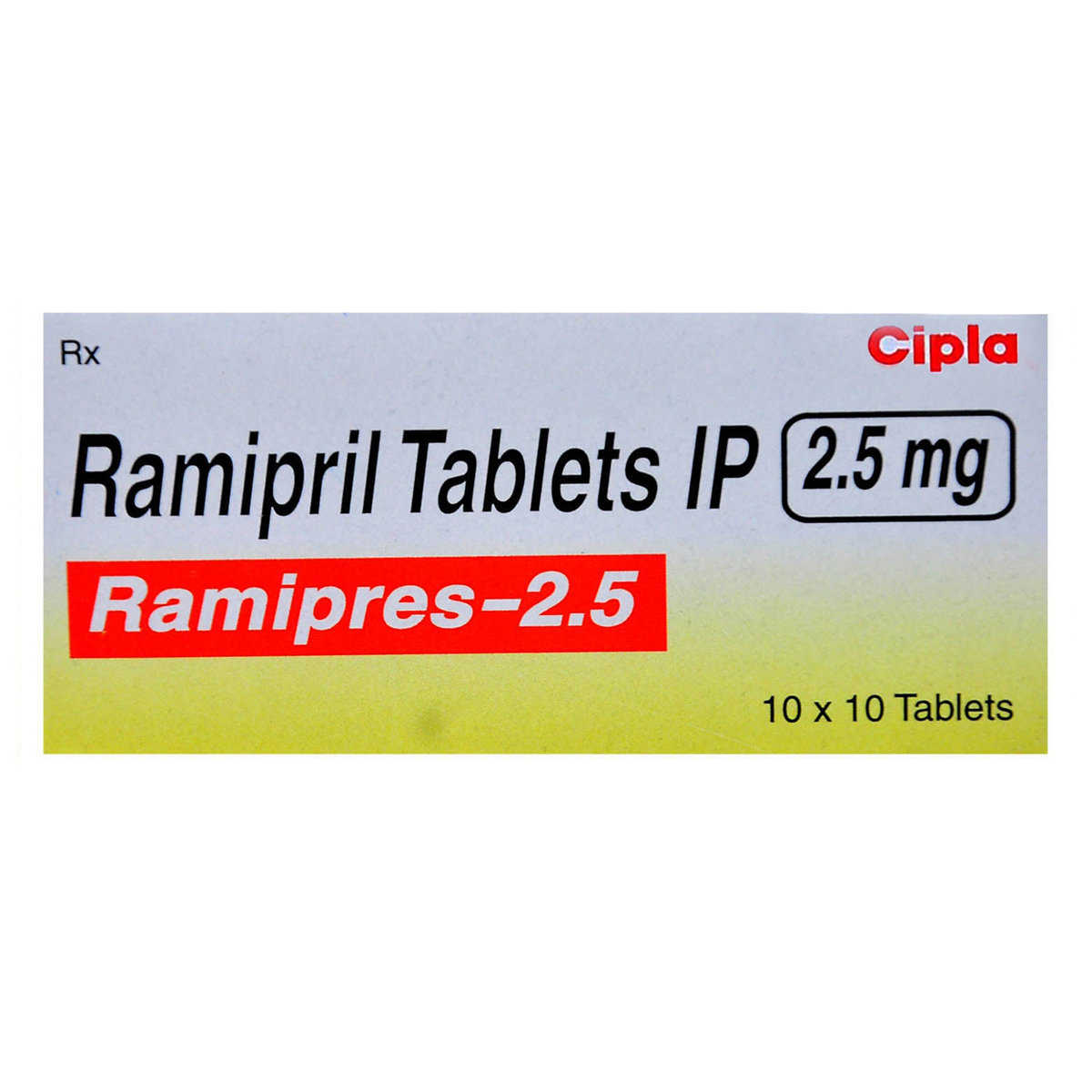
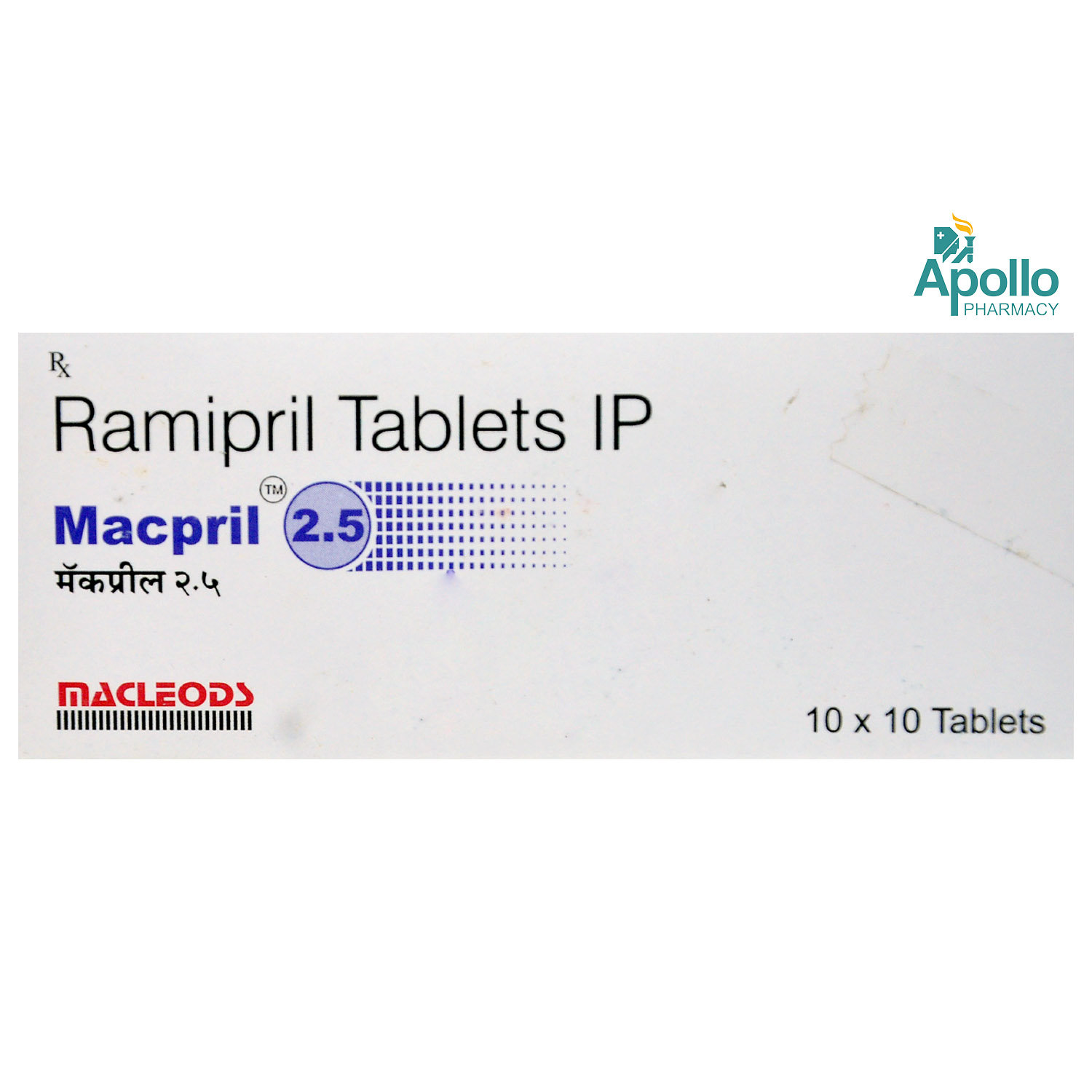
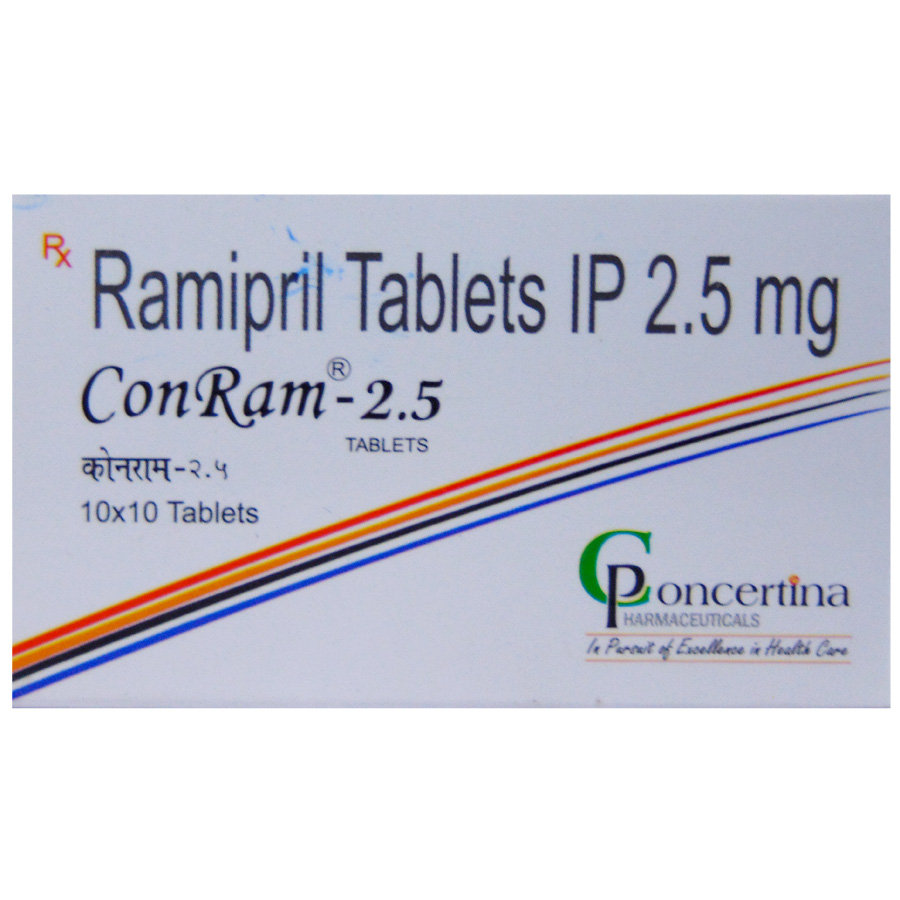

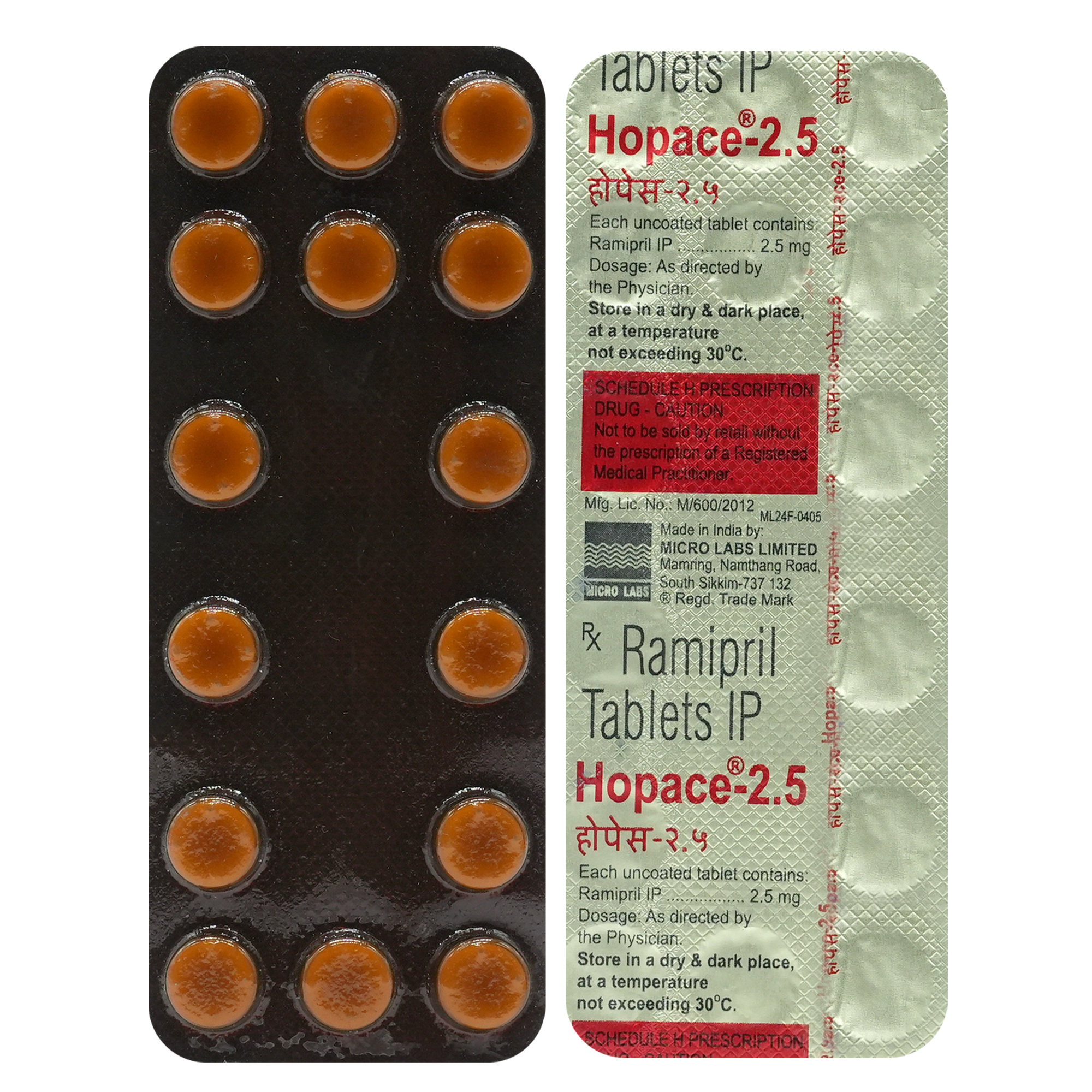
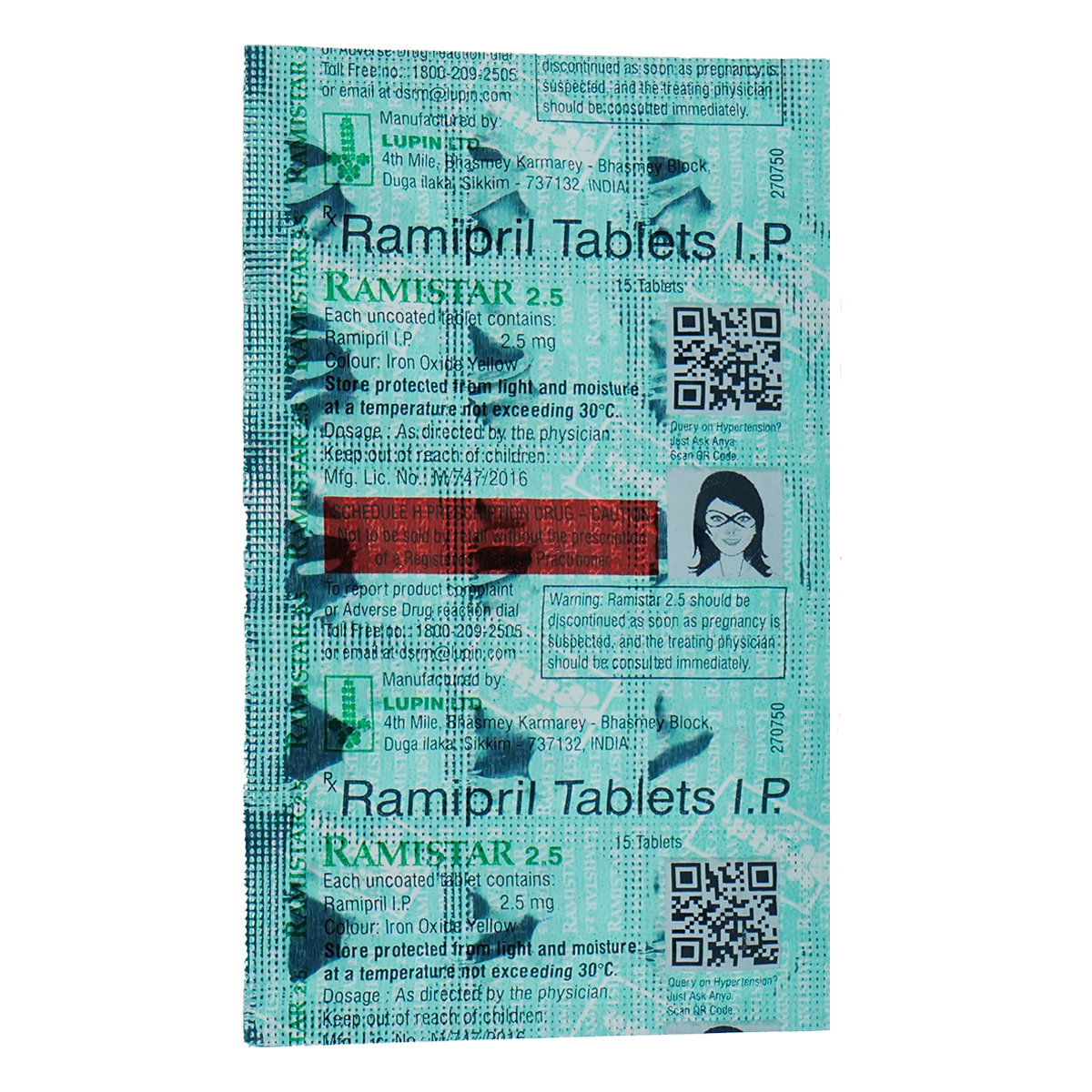

_0.jpg?tr=q-85)

